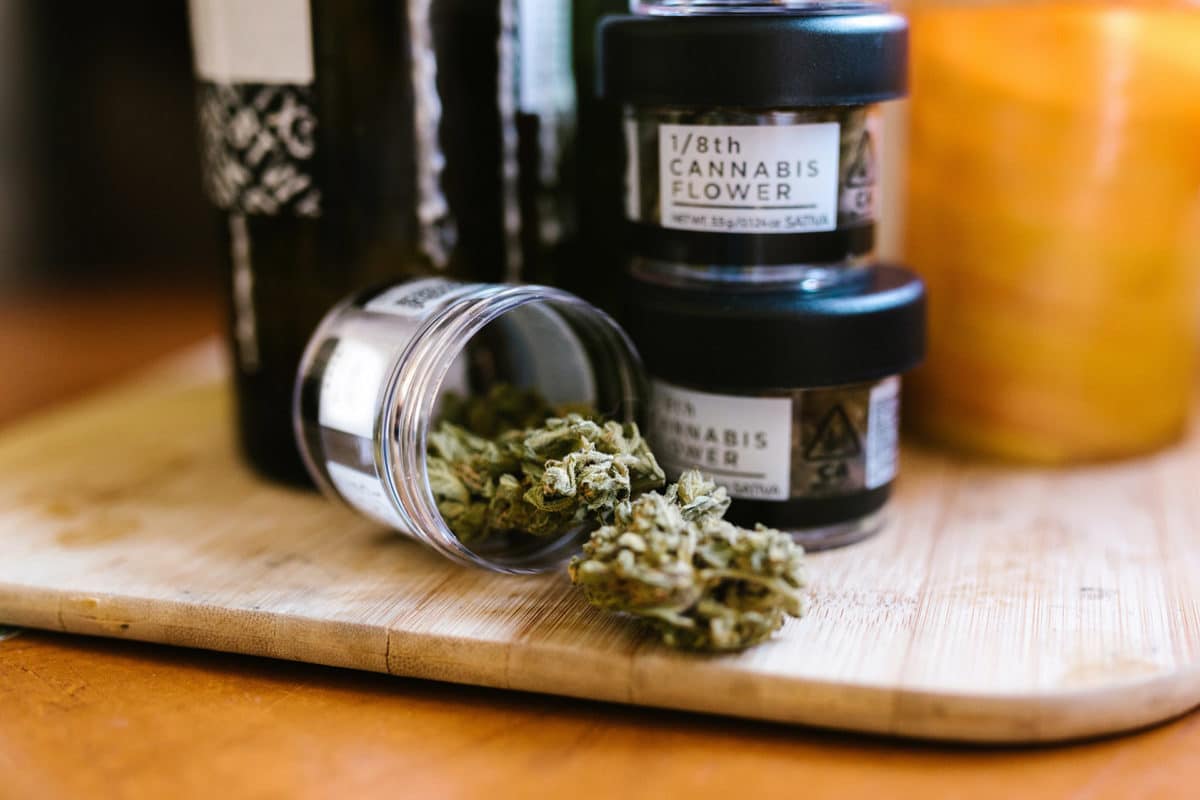Vermont Cannabis Laws to Ban Plastic Packaging

Recreational sales in Vermont began Oct. 1, and those first customers inside may have noticed something different from cannabis purchases in other states: Vermont cannabis laws require cannabis products to be sold in glass, metal or cardboard containers. In an industry where radical ideas present themselves every day, Vermont’s decision to ban plastic packaging is drawing extra attention.
Kyle Harris, a member of the state’s Cannabis Control Board, explains this decision grew out of a consciousness of the unnecessary wastefulness of single-use plastic jars and tubes. Typically made from fossil fuels and rarely recycled due to residue concerns, the innovative ruling to reduce cannabis waste has noble intentions but mixed reactions — some are frustrated while others agree with “the value of the state raising the bar,” he said.
One exasperated licensee is Nick Smith of Emerald Visions. His apprehension around the Vermont cannabis laws tied to packaging lies specifically with glass “doob tubes” and other cannabis containers ending up shattered in public areas such as streets and sidewalks after use.
“At least with plastic, it’s not going to end up as shards of glass in a dog’s paw,” Smith said.
Additionally, glass is not in a vacuum when it comes to utilization. After recently weighing all the cushioning packaging needed to encase 40 purchased glass jars, he found the packing was heavier than the same number of plastic Mylar bags.
“So you tell me which uses less plastic,” he said.
James Pepper, chair of the Vermont Cannabis Control Board, acknowledged last week the packaging regulations are complicated but said they are in place “so we don’t have to rely on heavy-duty, non recyclable, non reusable, single-use plastic jars and lids for flower.”
The board has issued guidance to the industry but doesn’t need to sign off on whether a package is sufficiently child deterrent, he said.
For the rest of the country with legalized cannabis sales, single-use cannabis containers became the norm largely due to safety concerns surrounding child access. In Vermont, the state board looked deeper into the various ways in which cannabis is sold to the public. For example, with edibles, a child is more likely to ingest, therefore the concern is valid, but in many other forms such as cannabis flower, it is not, said Harris of the state’s Cannabis Control Board.
Further, consuming a small amount of raw cannabis doesn’t necessarily present an overdose risk, as THC is only created when cannabis is heated via smoking, vaping or baking. Thus, a lower safety standard of child-deterrent packaging was allowed by lawmakers for cannabis flower and is defined as “tear-resistant packaging that can be sealed in a manner that would deter a child under five years of age from easily accessing the contents of the package within a reasonable time and not difficult for adults to use properly.”
Although more than 60 cannabis producers have sought exemptions from the no-plastic rule, the board has approved only four. Those requesting waivers claim non suitable non-plastic options, as well as prohibitive costs. One price comparison conducted by Old Growth Vermont found three-ounce glass jars with bamboo tops costing $1 each while similar plastic jars cost 20 cents. Using cannabis mason jars carries similar costs as an eight-ounce jar currently averages around $1 each. Inflation has impacted the packaging industry as well: in 2019, mason jars prices ranged between 50 cents and 75 cents per jar, depending on the source.
Other states are also looking to reduce cannabis waste without the extremity of a full ban on plastic packaging. New York regulators recently disclosed proposed marijuana packaging and labeling rules, which included provisions to boost sustainability by requiring cannabis businesses to incorporate “at least 25% post-recycled consumer content into their packaging and annually report key metrics on the implementation of their sustainability initiatives.”
Lyla Hunt, the New York Office of Cannabis Management (OCM)’s deputy director of public health and campaigns, said “I just want to underscore the balance of the wide array of different critical public policy goals in releasing the packaging and labeling regulations. We’re really excited to move the needle and to be leading here on the environmental component. We’re really excited to work to help continue those good efforts. With packaging, labeling, marketing, and advertising, it’s a confluence of factors that we’re trying to balance. We want to make sure there’s an array of products that are attractive to consumers, but not attractive to individuals under 21 so that we can safeguard public health and safety and protect youth.”
The nation’s leading business-to-business cannabis conference, CannaCon strives to grow the cannabis industry by educating cannabis businesses on all things related to cannabis and CBD, including packaging. Trade shows feature a large exhibition hall with exhibitors from around the country as well as seminars delivered by industry experts. Up your game in 2023 and attend an event!
